OVERVIEW
Heavy metal is a genre of rock music that developed in the late 1960s and early 1970s, largely in the United Kingdom and the United States. With roots in blues rock and psychedelic rock, the bands that created heavy metal developed a thick, massive sound, characterized by highly amplified distortion, extended guitar solos, emphatic beats, and overall loudness. Heavy metal lyrics and performance styles are often associated with masculinity, aggression, and machismo
The first heavy metal bands such as Led Zeppelin, Black Sabbath and Deep Purple attracted large audiences, though they were often derided by critics, a status common throughout the history of the genre. During the mid-1970s, Judas Priest helped spur the genre's evolution by discarding much of its blues influence; Motörhead introduced a punk rock sensibility and an increasing emphasis on speed. Beginning in the late 1970s, bands in the New Wave of British Heavy Metal such as Iron Maiden and Saxon followed in a similar vein. Before the end of the decade, heavy metal fans became known as "metalheads" or "headbangers".
During the 1980s, glam metal became a commercial force with groups such as Mötley Crüe and Poison. Underground scenes produced an array of more aggressive styles: thrash metal broke into the mainstream with bands such as Metallica, Megadeth, Slayer, and Anthrax, while other extreme subgenres of metal such as death metal and black metal remain subcultural phenomena. Since the mid-1990s popular styles have further expanded the definition of the genre. These include groove metal (with bands such as Pantera), influenced by extreme metal and hardcore punk, and nu metal (with bands such as Slipknot, Korn and Linkin Park), which often incorporates elements of grunge and hip hop.
CHARACTERISTICS
Heavy metal is traditionally characterized by loud distorted guitars, emphatic rhythms, dense bass-and-drum sound, and vigorous vocals. Metal subgenres variously emphasize, alter, or omit one or more of these attributes. New York Times critic Jon Pareles writes, "In the taxonomy of popular music, heavy metal is a major subspecies of hard-rock—the breed with less syncopation, less blues, more showmanship and more brute force. The typical band lineup includes a drummer, a bassist, a rhythm guitarist, a lead guitarist, and a singer, who may or may not be an instrumentalist.
The lead role of the guitar in heavy metal often collides with the traditional "frontman" or bandleader role of the vocalist, creating a musical tension as the two "contend for dominance" in a spirit of "affectionate rivalry". Heavy metal "demands the subordination of the voice" to the overall sound of the band. Reflecting metal's roots in the 1960s counterculture, an "explicit display of emotion" is required from the vocals as a sign of authenticity. Critic Simon Frith claims that the metal singer's "tone of voice" is more important than the lyrics. The electric guitar and the sonic power that it projects through amplification has historically been the key element in heavy metal. The heavy metal guitar sound comes from a combined use of high volumes and heavy distortion. Guitar solos are "...an essential element of the heavy metal code...that underscores the significance of the guitar" to the genre. Most heavy metal songs "...feature at least one guitar solo", which is "...a primary means through which the heavy metal performer expresses virtuosity. One exception is nu metal bands, which tend to omit guitar solos. With rhythm guitar parts, the "heavy crunch sound in heavy metal...[is created by] palm muting" the strings with the right hand and using distortion. Palm muting creates a tighter, more precise sound and it emphasizes the low end, creating the sound synonymous with thrash metal bands such as Metallica.
 |
| Metallica guitarists, James Hetfield and Kirk Hammett |
LYRICAL THEMES
According to scholars David Hatch and Stephen Millward, Black Sabbath, and the numerous metal bands that they inspired, have concentrated lyrically "on dark and depressing subject matter to an extent hitherto unprecedented in any form of pop music". They take as an example Sabbath's second album Paranoid (1970), which "included songs dealing with personal trauma—'Paranoid' and 'Fairies Wear Boots' (which described the unsavoury side effects of drug-taking)—as well as those confronting wider issues, such as the self-explanatory 'War Pigs' and 'Hand of Doom.' Deriving from the genre's roots in blues music, sex is another important topic—a thread running from Led Zeppelin's suggestive lyrics to the more explicit references of glam and nu metal bands.
In 1990, Judas Priest was sued in American court by the parents of two young men who had shot themselves five years earlier, allegedly after hearing the subliminal statement "do it" in a Priest song. While the case attracted a great deal of media attention, it was ultimately dismissed. In some predominantly Muslim countries, heavy metal has been officially denounced as a threat to traditional values. In countries such as Morocco, Egypt, Lebanon, and Malaysia, there have been incidents of heavy metal musicians and fans being arrested and incarcerated. In addition, the heavy metal band Iron Maiden were banned from playing in Chile in 1992, after the church denounced them as satanic.
The thematic content of heavy metal has long been a target of criticism. According to Jon Pareles, "Heavy metal's main subject matter is simple and virtually universal. With grunts, moans and subliterary lyrics, it celebrates...a party without limits.... The bulk of the music is stylized and formulaic." Music critics have often deemed metal lyrics juvenile and banal, and others have objected to what they see as advocacy of misogyny and the occult. During the 1980s, the Parents Music Resource Center petitioned the U.S. Congress to regulate the popular music industry due to what the group asserted were objectionable lyrics, particularly those in heavy metal songs. Music critic Robert Christgau called metal "an expressive mode it sometimes seems will be with us for as long as ordinary white boys fear girls, pity themselves, and are permitted to rage against a world they'll never beat".
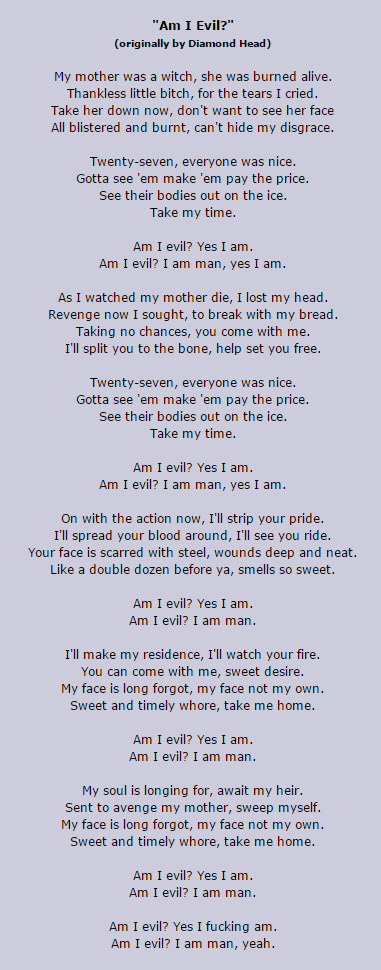 |
| Metallica/Diamond Head 'Am I Evil' Lyrics |
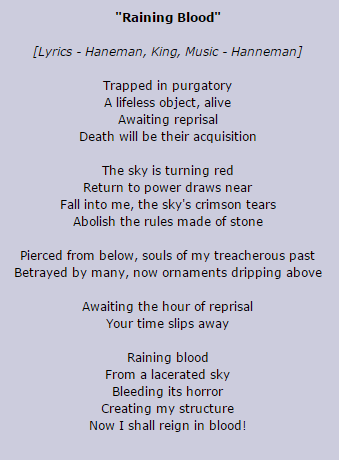 |
| Slayer "Raining Blood" Lyrics |
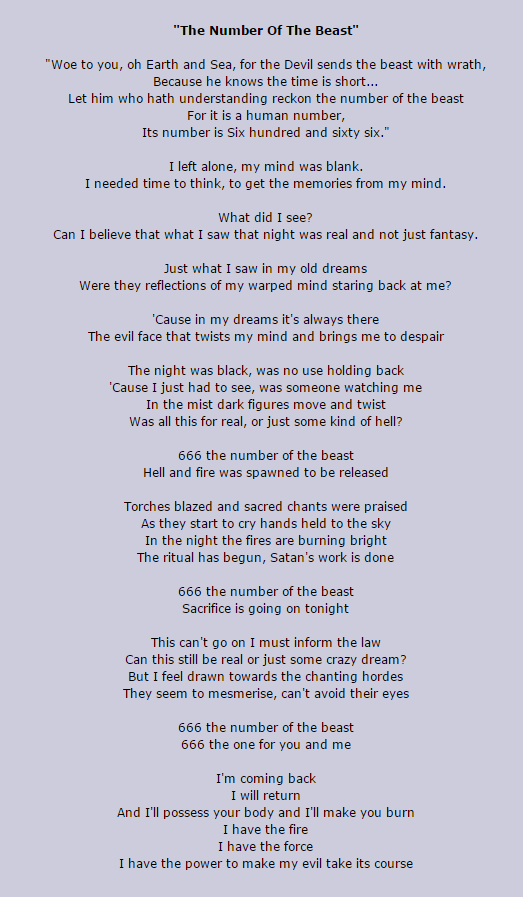 |
| Iron Maiden "The Number Of The Beast" Lyrics |
IMAGE AND FASHION
The clothing associated with heavy metal has its roots in the biker, rocker, and leather subcultures. Heavy metal fashion includes elements such as leather jackets; hi-top basketball shoes (more common with old school thrash metalheads); blue or black jeans, camouflage pants, shirts, jackets or shorts, and denim jackets or kutte vests, often adorned with badges, pins and patches. As with the bikers, there is a fascination with Germanic imagery, such as the Iron Cross.
 |
| Biker attire acted as an influence on generic heavy metal costume |
| 'Metal Heads' have a fascination with Germanic imagery, such as the Iron Cross |
 |
| The iron cross appears on Metallica's James Hetfield's signature guitar |
Distinct aspects of heavy metal fashion can be credited to various bands, but the band that takes the most credit for revolutionizing the look was Judas Priest, primarily with its singer, Rob Halford. Halford wore a leather costume on stage as early as 1978 to coincide with the promotion for the Killing Machine (Hell Bent for Leather in the USA) album. In a 1998 interview, Halford described the leather subculture as the inspiration for this look. Shortly after appropriating the leather look, Halford started appearing onstage on a roaring motor bike. Soon, the rest of the band followed.
It was not long before other bands appropriated the leather look; Iron Maiden's original singer Paul Di'Anno began wearing leather jackets and studded bracelets, Motörhead innovated with bullet belts, and Saxon introduced spandex. This fashion was particularly popular with followers of the NWOBHM (New Wave of British Heavy Metal) movement in the early 1980s, and sparked a revival for metal in this era.
 |
| Motorhead wearing bullet belts |
The studded leather look was extended in subsequent variations, to the wearing of combat boots, studded belts and bracelets, bullet belts, spiked gauntlets, etc.
For certain artists and bands, visual imagery plays a large role in heavy metal. In addition to its sound and lyrics, a heavy metal band's "image" is expressed in album sleeve art, logos, stage sets, clothing, and music videos. Down-the-back long hair is the "most crucial distinguishing feature of metal fashion." Originally adopted from the hippie subculture, by the 1980s and 1990s heavy metal hair "symbolised the hate, angst and disenchantment of a generation that seemingly never felt at home", according to journalist Nader Rahman. Long hair gave members of the metal community "the power they needed to rebel against nothing in general."
The classic uniform of heavy metal fans consists of light colored, ripped frayed or torn blue jeans, black T-shirts, boots and black leather or jeans jackets.... T-shirts are generally emblazoned with the logos or other visual representations of favorite metal bands." Metal fans also "appropriated elements from the S&M community (chains, metal studs, skulls, leather and crosses)." In the 1980s, a range of sources, from punk and goth music to horror films, influenced metal fashion.Many metal performers of the 1970s and 1980s used radically shaped and brightly colored instruments to enhance their stage appearance.
Fashion and personal style was especially important for glam metal bands of the era. Performers typically wore long, dyed, hairspray-teased hair (hence the nickname, "hair metal"); makeup such as lipstick and eyeliner; gaudy clothing, including leopard-skin-printed shirts or vests and tight denim, leather, or spandex pants; and accessories such as headbands and jewelry
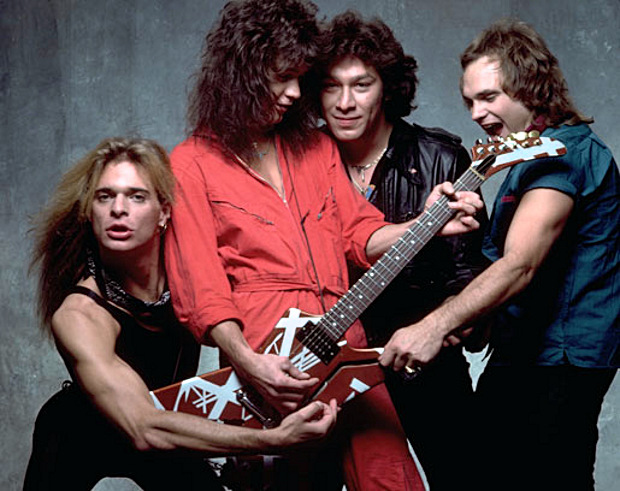 |
| Van Halen - A glam/hair metal band |
Guitars also play a large role within the metal world. Certain styles of guitars are used, while some tend to never make an appearance. For example, most metal guitarists tend to use guitars from companies such as Jackson, ESP, Ibanez, Charvel and Gibson, due to their shapes, which tend to be edgy and suit the genre, such as V and Explorer shaped guitars.
 |
| One of James Hetfield's Explorer shaped guitars |
 |
| Pantera's Dimebag Darrell and his signature guitar |

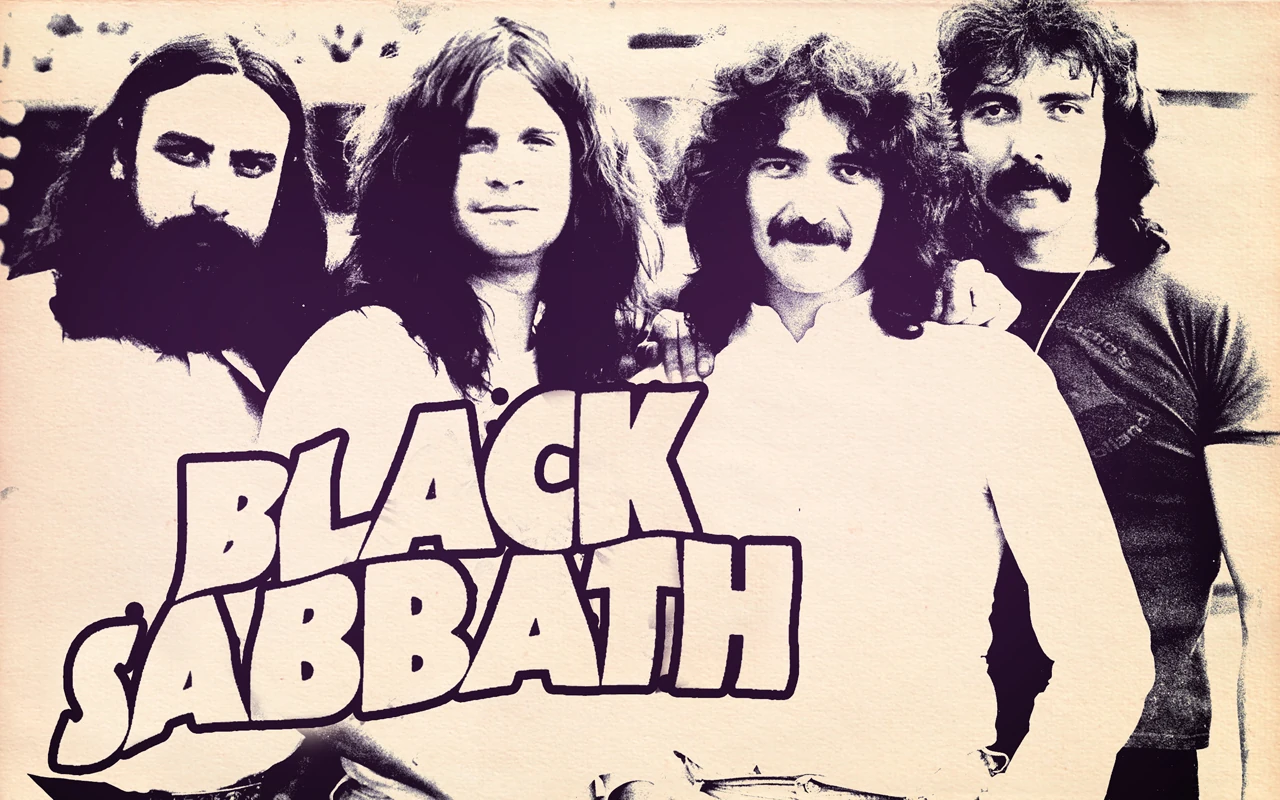


No comments:
Post a Comment